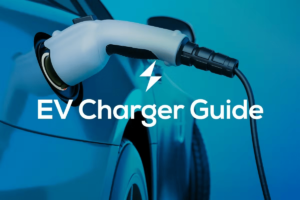
Find A DC Fast Charging Location Today!
- 5055 West Park Blvd Ste 400 Plano, Texas 75093
Find A DC Fast Charging Location Today!
Get started with us, You will need a good plan !
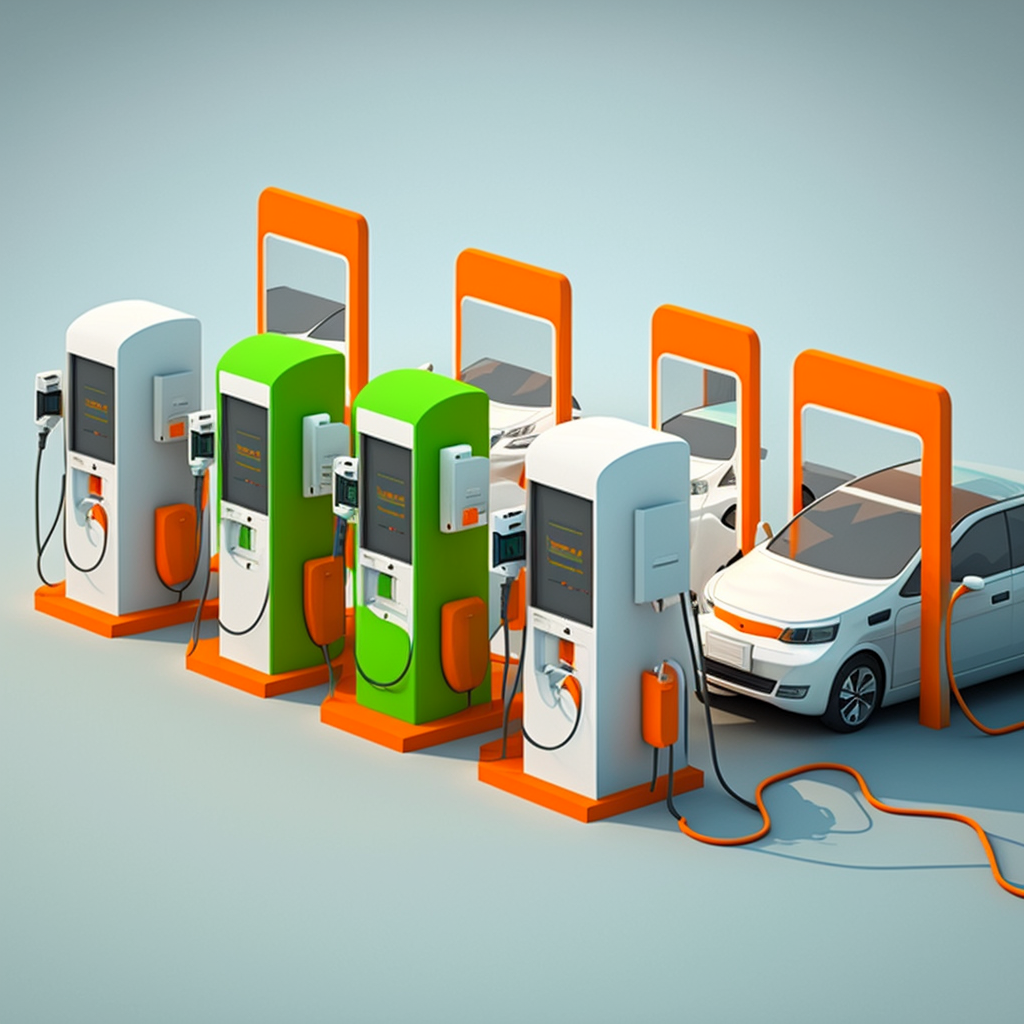
The transportation sector is the biggest contributor to global greenhouse gas (GHG) emissions and is responsible for nearly one-fourth of global CO2 emissions. Road transport constitutes the largest share of these emissions which comprises passenger vehicles like cars, buses, and trucks carrying freight [1]. The transition to electric vehicles (EVs) is a significant part of the global effort to reduce carbon emissions and combat climate change. The EV market has seen a high growth rate in recent years and is predicted to continue to develop at a fast pace within the next decade. In the United States, the percentage of electric cars sold was raised from less than 0.2 percent in 2011 to 4.6 percent in 2021 [2]. For making a smooth and successful transition towards electric mobility; a reliable, affordable, and accessible electric vehicle charging infrastructure is essential in all regions and market segments [3].
The decision to buy an electric vehicle raises some questions in the minds of EV owners. Most EV owners are concerned about charging their electric vehicles. It is obvious to worry since most Americans have spent their life driving around gasoline-powered cars, fueling up at one of the hundreds of thousands of gas stations when gauge meters go down to empty. Charging an EV requires a little more knowledge and planning [4]. Electric vehicle charging is the process of restoring the energy within the battery of an EV. This stored energy is used to power the electric motor of an EV to move. An electric vehicle charging station also known as a chargepoint or electric vehicle supply equipment (EVSE) utilizes electric power to recharge electric vehicles [5].
At the most basic level, an electric vehicle is charged from an EV wall charger through a charging cable that is connected to the electricity grid from where it receives electrical power [4]. The charging cable can be plugged into different power sources depending on the charging equipment. EV batteries require direct current (DC) to recharge them. Since the electrical power received from the grid is alternating current (AC), this must be converted into DC either by a vehicle’s onboard charger or by the wall charging equipment itself [5]. The electric vehicle can be charged at various locations such as home EV charging, public charging stations, or dedicated commercial electric vehicle charge points known as workplace charging [6]. All these EV charging locations are dependent upon the charging technology used, known as the levels of EV charging.
Refueling a car from a gas station is a pretty straightforward process. You park your car at the gas stations, choose a variant such as regular, mid-grade, or premium gasoline, or diesel; and refuel it within five minutes. However, in the case of electric vehicles, the recharging process is not as simple or as quick. Multiple factors can affect the EV recharging process, such as the EV model, connector selection, and recharging power [7]. All these factors determine the charging time and are broadly categorized into three levels of EV charging which are briefly described below. Acquiring knowledge of these facts is essential for EV owners. Some quick facts about the three levels of EV charging are also elaborated in Figure 1.
Level 1 is the basic level of charging that utilizes a standard 120 Volt household outlet. Every new electric vehicle comes with a level 1 charging kit that can be plugged into a regular wall outlet of most households. Level 1 is the easiest way to recharge an EV, but is the slowest method of EV charging [7]. Level 1 charging can take days not hours to fully recharge an empty EV battery, approximately around 40 to 50 hours. It can add 3 to 5 miles of range per hour. Level 1 charging can be a feasible option if you travel less than 20 miles per day [8]. That can be a pragmatic choice for US travelers who on average travel above 30 miles per day [9]. Level 1 charging also works fine for plug-in hybrid electric vehicles (PHEVs) due to their smaller battery size. However, battery electric vehicles (BEVs) have much bigger batteries and most EV users find level 1 EV charging too slow for their daily needs [7].
Level 2 is the most widely adopted charging method by EV owners. Level 2 EV charging equipment can be installed at homes, workplaces, and other commercial places like shopping malls as a public charging station. Level 2 charging operates at 240 Volts and requires a dedicated circuit hardwired line from mains. Level 2 charging is considered as much faster and more efficient and can work 10 times faster than level 1 charging. It can add 12 to 80 miles of range per hour depending on the vehicle model and charger type [7]. Most of the public charging stations use level 2 EV charging, however, EV owners can also install level 2 charging equipment at their residences so that they can recharge their vehicles overnight [8]. Level 2 charging equipment can be a valuable addition to your home if you own and drive an EV on a regular basis. Although level 2 chargers get additional expenses, some states and local governments provide incentives to offset this cost [10].
Level 3 EV charging, also known as DC fast charging (DCFC), is the fastest available charging technology available for recharging electric vehicles. Contrary to level 1 and level 2 charging that utilizes alternating current (AC), level 3 operates on direct current (DC) for recharging EVs. Level 3 DC chargers operate at much higher voltage (400 Volt to 900 Volt) and, therefore only available at specified public EV charge points [7]. Level 3 chargers are best suited for long trips on highways or motorways since they can add 100–250 miles of range in just 30–45 minutes [10]. There are three types of Level 3 chargers available in North America [11]:
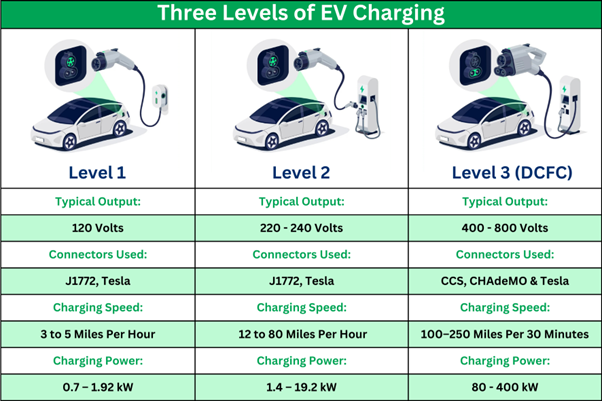
Figure 1: Three Levels of DC Charging – Quick Facts
Home charging is still the most common way to recharge electric vehicles around the globe. In North America, the share of home-based EV charging trends is also high, such as in the United States (83%) and Canada (80%). Besides having a home EV charging station, 15,900 such private non-home chargers in the United States are usually reserved for employees, fleets, or specific customers. Despite large numbers of private chargers, public charging along with the infrastructure’s interoperability is essential to facilitating the wider adoption of electric vehicles. Worldwide, there has been a rise in the number of public charging stations by more than 40% in 2023, along with a high growth rate seen in DC fast charges of about 55%. By December 2023, DC fast chargers comprised over 35% of public charging stations [12].
The United States government has announced various funding programs for electrifying America’s transportation sector through new electric vehicle charge point projects across the country. The US government has already installed 180,000 public EV charging stations and is progressively going to achieve a goal of 500,000 by 2030. Furthermore, as the number of home and public charging stations is growing at a rapid rate, this has raised concerns regarding the interoperability of EV charging infrastructure [12]. Last year, the SAE International in the United States announced it has taken a keen step towards regulating the North American Charging Standard (NACS). As per their initiative, the Tesla charging connector (SAE J3400) has been standardized as an EV charging connector across North America [13]. Almost all EV manufacturers have announced plans to equip their electric vehicles with NACS charge ports starting in 2025. This will help empower EV owners with more options for reliable, convenient vehicle charging across North America [14]. Figure 2 illustrates the comparison of the NACS and CCS1 connectors.
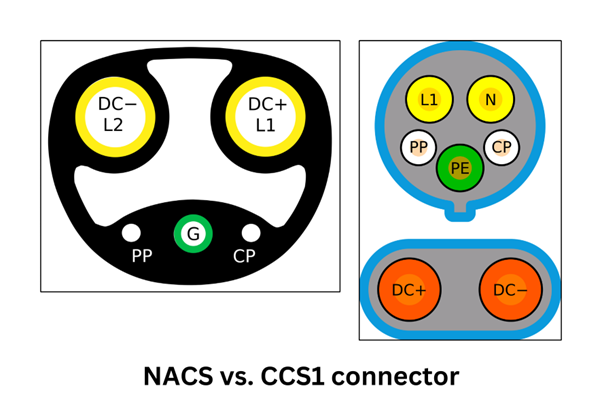
Figure 2: Comparison of NACS vs. CCS1 connector (Source: Wikipedia)
The International Energy Agency (IEA) reports that by 2030 the global number of public EV charging stations will exceed 15 million, which will be more than four times as compared to 4 million operating in 2023. Moreover, this number will reach about 25 million by 2035, which will be six times higher as compared to 2023. Furthermore, the IEA suggests that EV charging services should also be easy to use, reliable, and transparently priced [12]. For increasing the reliability and efficiency of EV charging infrastructure, Frank Mühlon of ABB points out that new software solutions and cloud-based digital services are emerging to optimize the real-time fleet management of EVs across businesses. Furthermore, Giovanni Palazzo of Electrify America highlights that the share of renewables in the energy mix will increase in the future, this will demand a more resilient system with smart energy grid services and real-time pricing [15].
The United States government is heavily funding building the EV charging infrastructure to meet the future rise in demands. Under the administration of the Federal Highway Administration and the Joint Office of Energy and Transportation, two programs have been initiated: The National Electric Vehicle Infrastructure (NEVI) Formula Program and the Charging and Fueling Infrastructure Discretionary Program. These programs will provide funds of $7.5 billion for building a reliable and convenient EV charging network across the country [16]. Besides strengthening the EV charging infrastructure, the US government is also strengthening the overall electricity grid to build a resilient and cost-effective electricity system. The U.S. The Department of Energy (DOE), through the “EVGrid Assist: Accelerating the Transition” program will facilitate vehicle-grid integration (VGI) technology for the speedy mobilization of electric vehicles and related charging facilities by minimizing the load on the electricity grid and helping utility companies making better decisions. The US DOT and DOE have allocated $7.5 billion and $13 billion respectively over five years for building and developing EV and electricity infrastructure for improving the system’s resilience and reliability [17]. Figure 3 shows VGI technology.
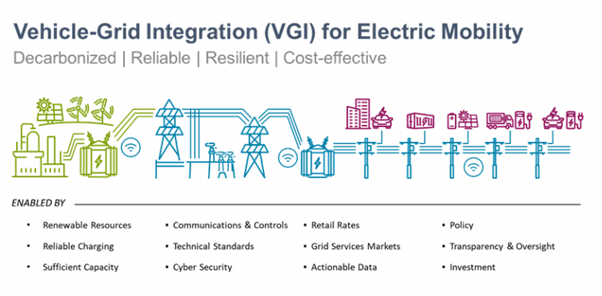
Figure 3: Showing VGI (vehicle-grid integration) refers to the full suite of infrastructure, hardware, software, markets, and regulation (Source: DOE)
Electric vehicle charging infrastructure is continuously growing at a rapid rate. The rise in number of electric vehicle charge points is seen equally across home and public charging stations. The United States government is heavily funding various programs and projects to develop and build a reliable and resilient EV charging infrastructure across the country. Level 2 and DC fast chargers are considered as the building blocks for strengthening the public charge points. The energy-efficient electricity grid is the backbone of any EV charging infrastructure. Smart grids and vehicle-to-grid technologies will enhance the overall efficiency of any electricity infrastructure. The US government is also investing to make a reliable and strong electricity grid for supporting EV charging infrastructure. The electric vehicles and their supported charging infrastructure will help us to lead towards the path of achieving a net-zero transition soon.
[1] A. Märtz, P. Plötz, and P. Jochem, “Global perspective on CO2 emissions of electric vehicles,” Environ. Res. Lett., vol. 16, no. 5, p. 054043, Jun. 2021, doi: 10.1088/1748-9326/abf8e1.
[2] J. C. and L. Ice, “Charging into the future: the transition to electric vehicles,” Beyond the Numbers: Employment & Unemployment, U.S. Bureau of Labor Statistics, vol. 12, no. 4, Feb. 2023, Accessed: Apr. 18, 2024. [Online]. Available: https://www.bls.gov/opub/btn/volume-12/charging-into-the-future-the-transition-to-electric-vehicles.htm
[3] I. L. Aranda, M. Pruna, and D. Pulido, “Charging Infrastructure Powers The Electric Mobility Transition – Insights on IFC’s support for market creation and early stage project development.” International Finance Corporation (IFC), 2023. Accessed: Apr. 18, 2024. [Online]. Available: https://www.ifc.org/content/dam/ifc/doclink/2023/charging-infrastructure-powers-the-electric-mobility-transition-ifc-2023.pdf
[4] EvoCharge, “What Is EV Charging & How Does it Work?,” EvoCharge. Accessed: Apr. 18, 2024. [Online]. Available: https://evocharge.com/resources/how-does-ev-charging-work/
[5] C. Teague, “Here’s How Fast Charging an EV Works,” Autoweek, May 21, 2021. Accessed: Apr. 21, 2024. [Online]. Available: https://www.autoweek.com/news/a36417985/how-ev-fast-charging-works/
[6] S. Martinez, “What is EV Charging? Understanding the Basics and Beyond – WattLogic,” WattLogic. Accessed: Apr. 19, 2024. [Online]. Available: https://wattlogic.com/blog/what-is-ev-charging/
[7] “What Are The Different Levels Of Electric Vehicle Charging?,” Forbes Wheels. Accessed: Apr. 23, 2024. [Online]. Available: https://www.forbes.com/wheels/advice/ev-charging-levels/
[8] C. Lindwall, “Electric Vehicle Charging Explained,” Natural Resources Defense Council (NRDC). Accessed: Apr. 23, 2024. [Online]. Available: https://www.nrdc.org/stories/electric-vehicle-charging-explained
[9] R. Steinbach and B. C. Tefft, “American Driving Survey: 2022 – Research Brief,” AAA Foundation for Traffic Safety, Sep. 2023, Accessed: Apr. 23, 2024. [Online]. Available: https://aaafoundation.org/american-driving-survey-2022/, https://aaafoundation.org/american-driving-survey-2022/
[10] N. Kurczewski, “Different Levels of EV Charging,” Car and Driver. Accessed: Apr. 23, 2024. [Online]. Available: https://www.caranddriver.com/research/a41803552/ev-charging-levels/
[11] M. Takahashi, “Everything You Need to Know About Charging an Electric Vehicle,” Car and Driver. Accessed: Apr. 24, 2024. [Online]. Available: https://www.caranddriver.com/features/a40967967/electric-vehicle-charging-guide/
[12] IEA, “Global EV Outlook 2024,” International Energy Agency (IEA), Paris, Apr. 2024. Accessed: Apr. 24, 2024. [Online]. Available: https://www.iea.org/reports/global-ev-outlook-2024
[13] SAE, “SAE International Announces Standard for NACS Connector, Charging PKI and Infrastructure Reliability,” SAE International. Accessed: Apr. 25, 2024. [Online]. Available: https://www.sae.org/site/news/press-room/2023/06/sae-international-announces-standard-for-nacs-connector
[14] Wikipedia, “North American Charging Standard,” Wikipedia. Apr. 23, 2024. Accessed: Apr. 25, 2024. [Online]. Available: https://en.wikipedia.org/w/index.php?title=North_American_Charging_Standard&oldid=1220352296
[15] F. Mühlon and G. Palazzo, “The future of EV charging infrastructure: Executive perspectives,” Oct. 25, 2021. Accessed: Apr. 25, 2024. [McKinsey]. Available: https://www.mckinsey.com/capabilities/operations/our-insights/the-future-of-ev-charging-infrastructure-executive-perspectives
[16] DOE, “Biden-Harris Administration Announces Over $46 Million to Enhance EV Charging Reliability and Workforce Development,” Department of Energy (DOE). Accessed: Apr. 25, 2024. [Online]. Available: https://www.energy.gov/articles/biden-harris-administration-announces-over-46-million-enhance-ev-charging-reliability-and
[17] DOE, “EVGrid Assist: Accelerating the Transition,” Department of Energy (DOE). Accessed: Apr. 25, 2024. [Online]. Available: https://www.energy.gov/eere/evgrid-assist-accelerating-transition

As a Spark Spot team member, I want to thank you all for taking the time to read my article. For more insights on Spark Spot and the EV charging industry, please click the link below to continue reading.

Ryan is a passionate writer dedicated to exploring the electrifying world of Electric Vehicle (EV) charging. With a keen interest in sustainable transportation solutions, Ryan delves into the intricacies of EV charging infrastructure, offering insights, analysis, and practical tips to empower readers on their journey towards a greener future.

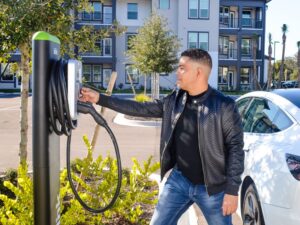
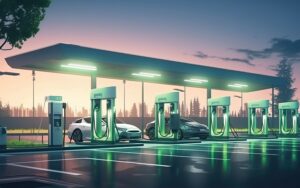
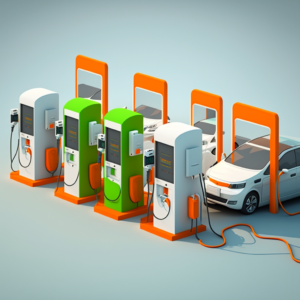
Copyright © 2024 Spark Spot LLC. All rights reserved.